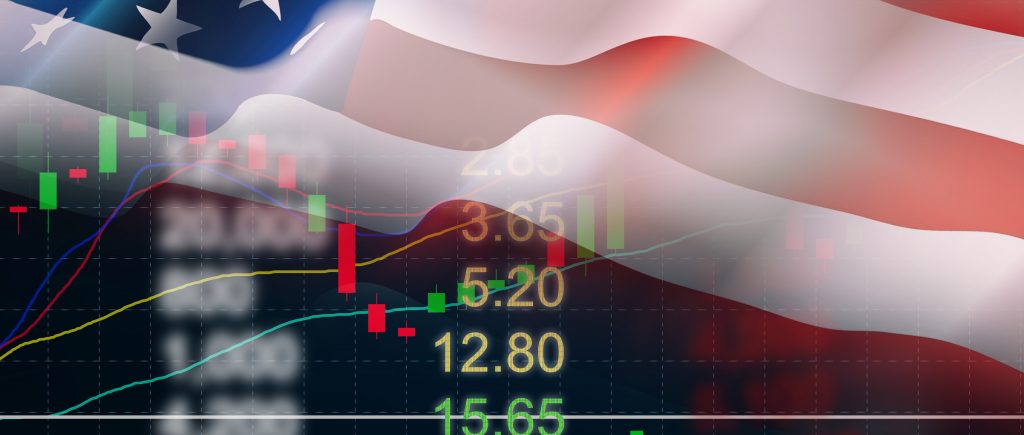Wall Street stocks closed February on a noticeably shaky note, raising concerns about the resilience of a rise that began in early 2023.
The Dow Jones Industrial Average had a solid start to the year in January, but it declined by 4.2% in February, bringing the blue-chip index’s annual decline to 1.5%.
The tech-heavy Nasdaq Composite fell 1.1%, bringing its 2023 gain to 8.9%, while the benchmark S&P 500 index shed 2.6% last month to reduce its year-to-date gain to 3.4%.
When investors were compelled to reevaluate their assumptions for how high the Federal Reserve would raise interest rates in light of indicators pointing to a strong economy and still-high inflation, cracks started to appear in an early-year surge.
Due to a number of market-moving events, the upcoming month is anticipated to be one of the most significant on Wall Street in recent years and may likely determine the market’s course through the end of 2023.
Regarding the factors that the markets will use to determine price movement in March, it is anticipated to be similar to the last several months. These factors include the monthly employment report, the most recent inflation and retail sales data, as well as the impending Fed FOMC policy meeting.
Friday, March 10: U.S. Jobs Report
The February nonfarm payrolls data, which is widely anticipated, will be made public by the U.S. Labor Department on Friday, March 10, at 8:00 ET. Although the growth is less than in recent months, projections assume that hiring will continue at a steady rate.
According to Investing.com, the number of employment added in the U.S. economy is expected to increase by 200,000, a slowdown from the 517,000 jobs gained in January. One percentage point higher than January’s 53-year low unemployment rate of 3.4% and a level last seen in 1969, the jobless rate is forecast to rise to 3.5%.
To put things in context, the unemployment rate stood at 3.8% exactly one year ago in February 2022, a sign that more Fed rate hikes will be needed to rein in the red-hot labor market.
While some economists argue that the unemployment rate would need to be much higher, Fed officials have indicated that it must be at least 4.0% in order to reduce inflation. In any case, the low unemployment rate and solid job growth suggest that there will be further rate increases in the months to come.
Tuesday, March 14: U.S. CPI Data
On Tuesday, March 14, the consumer price index (CPI) data will be released. Analysts anticipate it may be hotter than January’s 6.4% year-over-year rate, indicating that the Fed will continue to fight against inflation.
Although no official predictions have been made as of yet, the yearly CPI is anticipated to rise between 6.1% and 6.5%. Although consumer price inflation has been steadily declining since reaching a peak of 9.1% in June, it is still much above than the Fed’s 2% goal range.
In contrast to January’s 5.6% reading, projections for the year-over-year core number range between 5.5 and 7.0%. Many economic analysts, including Fed officials, keep a careful eye on the underlying number because they think it offers a more accurate prediction of the direction of inflation in the future.
Wednesday, March 15: U.S. PPI, Retail Sales
The February producer price index report and the most recent retail sales statistics, both expected at 07:30 ET on Wednesday, March 15, will be closely watched by the market because the Fed is data-dependent.
This month’s statistics will be especially crucial because it will be the last bit of information the Fed receives before deciding on its course of action.
Stocks sold off sharply on the days of the PPI and retail sales reports last month after the data showed a higher-than-expected increase in wholesale prices, while retail sales scored their biggest monthly gain in almost two years.
Wednesday, March 22: Fed Rate Hike, Powell Speech
At the end of its two-day policy meeting at 14:00 ET on Wednesday, March 22, the Federal Reserve is almost expected to raise interest rates by a quarter point. The Fed Funds Target Range would then fall between 4.75% and 5.00%.
As a result, traders have begun to account for the prospect of a higher rate rise of 50 basis points, but the likelihood of this happening is still remote—about 25%, according to the Investing.com Fed Rate Monitor Tool.
But, depending on the incoming data in the days prior to the significant rate decision, it might undoubtedly alter.
Following the release of the Fed’s statement, Fed Chairman Jerome Powell will hold a press conference that will be closely watched by investors who are seeking new information on his perspectives on inflation trends, the economy, and how those perspectives will affect the rate at which monetary policy is tightening.
Also, the Federal Reserve will provide updated “dot-plot” projections for interest rates and economic growth. These projections will provide clearer indications of the Fed’s expected trajectory for rate increases through 2023 and beyond.
Bets on a Fed rate hike have increased significantly in recent weeks, with the peak rate now expected to be in the 5.25–5.50% range by June. This is because a number of encouraging data points have raised hopes that the Fed will continue raising interest rates through the summer and keep them higher for longer.
Friday, March 31: U.S. PCE Inflation Report
On Friday, March 31, the U.S. government will release the personal consumption expenditures (PCE) price index, the Fed’s favoured inflation measure. This will be the last economic report for the month.
Wall Street was alarmed last month when the January PCE data revealed that the index surged 5.4% on an annual basis after increasing 5.3% the month before.
Excluding the volatile food and energy components, the core PCE price index increased 4.7% in the last 12 months, picking up from a 4.6% annual pace in December.
 Noor Trends News, Technical Analysis, Educational Tools and Recommendations
Noor Trends News, Technical Analysis, Educational Tools and Recommendations





